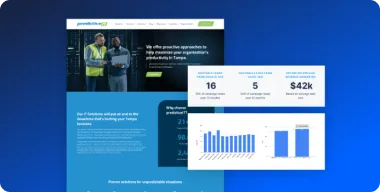For webmasters who never understood the concept of quality as the SEO watchword – or who just don’t pay attention to content or search engines, the arrival of the Google Penguin and Panda has been a painful experience. Some webmasters still don’t know what hit them. Of course, most webmasters don’t really understand search engines, and don’t have the time to keep up with the latest algorithm changes. They wouldn’t know the difference between a Penguin and a Panda outside of a zoo. They may have only lately realized that it wasn’t the economy that hit their business but the stench of poop from the Google Zoo.
The savviest SEOs can tell you when the first Panda update hit – how it slaughtered low quality sites Google calls “content farms” that were low on content and had too many ads in relationship to content. That latest update is a refinement of the layout algorithm that targets ads above the fold and other elements. But if you’re the Rip Van Winkle of webmasters just waking up to the metaphorical poop on the roof, you just need to know how it affects you – and what to do about it.
- Problem: Not enough content or low quality content. You have to give the audience what they want – and most people want the song, dance and maybe even a cookie before they buy. A page with 200-300 words on it is like the crumbs left after the cookies are gone. It offers little, if any, information of interest to anyone – let alone your customer. What’s your bounce rate? How long are people sticking around? How many pages are they visiting? If the answers are “more than 50%”, “less than a couple of minutes” and “less than 3 on average” you need to provide more meat and potatoes to your web visitors.
Solution: Make content king. As never before. Remove lower quality content or significantly enhance the content on lower quality pages. Make sure your content is truly for the user. A great place to start is your frequently asked questions – which ones could really be expanded to their own page? Ask your customer service folks and salespeople to add to that base of FAQs. What do they have to explain more than twice. If you don’t have a blog, get one and add quality content regularly. Cover the news in your industry; interview the important people; don’t be afraid to be controversial if you honestly feel the message. Read everything you can about “link bait” and put it into practice, but always keep the user foremost in your mind. I know it sounds like Google propaganda, but it will serve you in the long run if not before. People return to sites when they find what they want there. - Problem: Too many ads. It’s all relative, isn’t it? Yes, it’s similar to keyword stuffing – you know it sounds spammy when you read it. If you land on a page and you can’t quickly and easily find the content you like, you find it frustrating, don’t you? Most users do, too.
Solution: Less conspicuous and fewer ads. Don’t have any ads above the fold, or make sure you at least have more content than advertising above the fold, and of course, make sure that it is quality content. Keep the ratio of content to ads in favor of content. - Problem: Participation in link schemes or links from bad neighborhoods. Chances are if your link profile is the problem, you know it. You let your “SEO Consultant” buy links from unrelated sites or you exchanged links willy nilly without regard to relevance or quality. But the pages had high PageRank, you say? Sorry, but you now need a stronger tool for testing quality and the value of an exchange or a link.
Solution: Use traffic and the user as your quality guide. Will the link drive traffic to your site? By all means get that link! Will the link out provide a resource or other value for your web site visitor? Then link out with impunity. Quality is subjective, but if you stick to relevant sites that provide information you think is worthwhile, and that you would be proud to claim as business associates, you should be fine. If you have been participating in link schemes, you may need to remove those links too. - Problem: Anchor text mostly all the same money term. If you’ve been linking for PageRank, there’s a good chance you concentrated on one or two of your money terms. Google is looking for a natural profile, which means most of your links will be different from one another and your company name and URL will figure prominently in your link profile.
Solution: Build quality links with varied anchor text. If your link profile is top heavy with money terms, start building links with your company name, your URL (unless it’s an exact match URL which is also under fire from Google) and terms you’ve never used before. Strive to have relevant text adjacent to your anchor text, but keep your money terms out of the links until your site’s rankings have recovered. - Problem: Duplicate content. Whether it’s on your site or you are publishing content that’s on another site, you aren’t adding value to the Inter-verse when you’re repeating yourself or others.
Solution: Rewrite or add new content. I know e-commerce sites webmasters who moan that it’s tough to make 1,000 descriptions different. But sites like eBay have added videos on their more popular items, and many sites also publish reviews on their site. If you can get people to post reviews, that will be unique content that can provide enough difference to overcome the use of duplicate descriptions. If your content has been scraped, you may want to file a DMCA complaint but in a lot of cases, it may be easier to rewrite what you have.
One common thread runs through all these problems and solutions – or should: the user! Your focus must be on content, navigation, tools and resources that provide what your target market wants. When your focus is where it belongs – on your potential customer – your site will climb back up in the results pages and you will win the loyalty, trust and business of the users who find your content.
About the Author
M.J. Taylor runs a blog about quality link building, SEO social media and copywriting. You can find more of what she has to say about search engines by following @m_j_taylor on Twitter.




